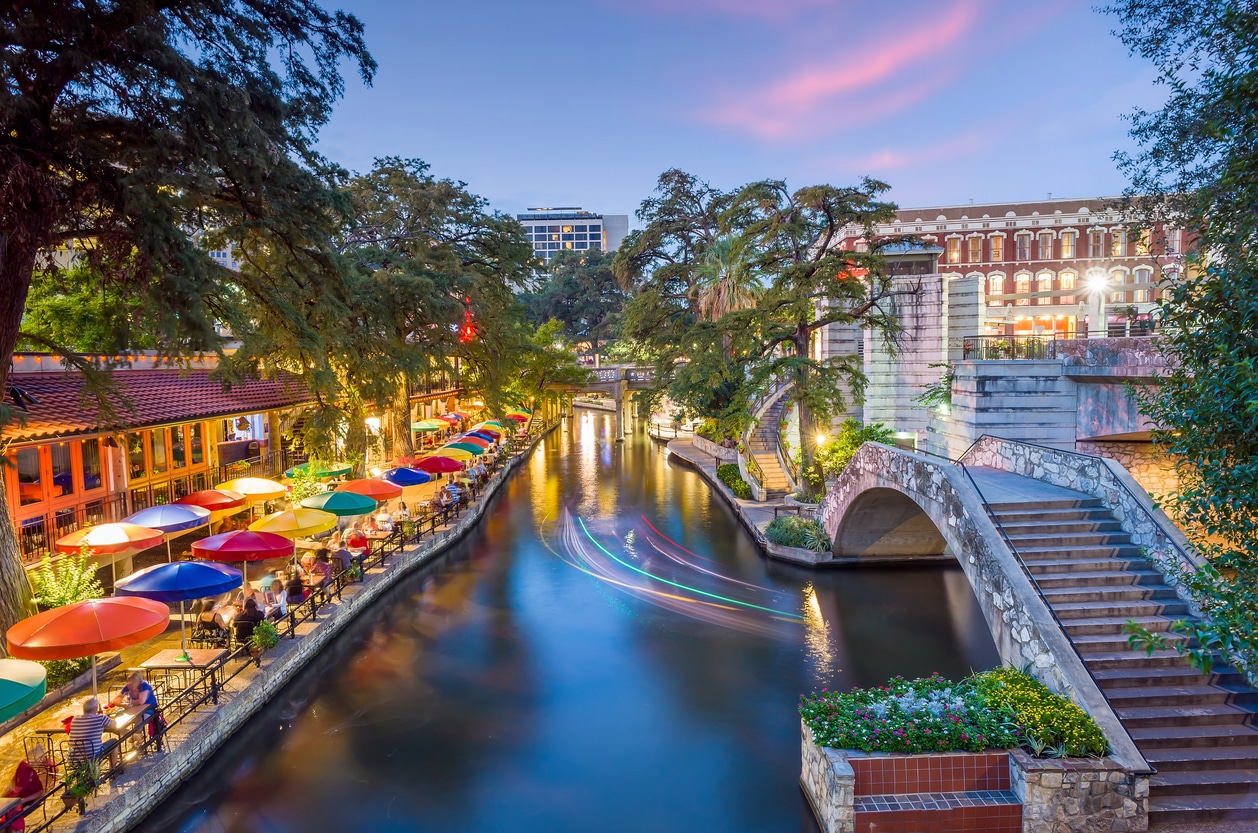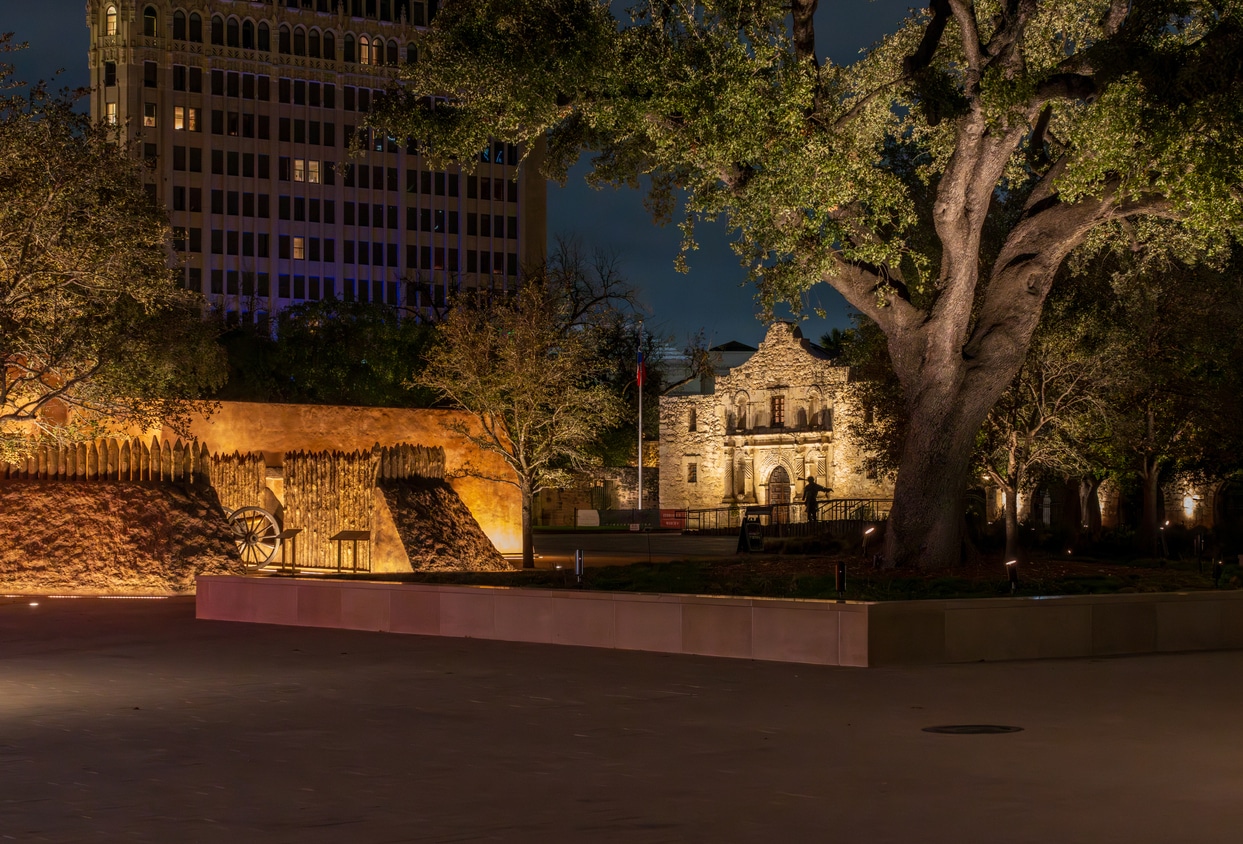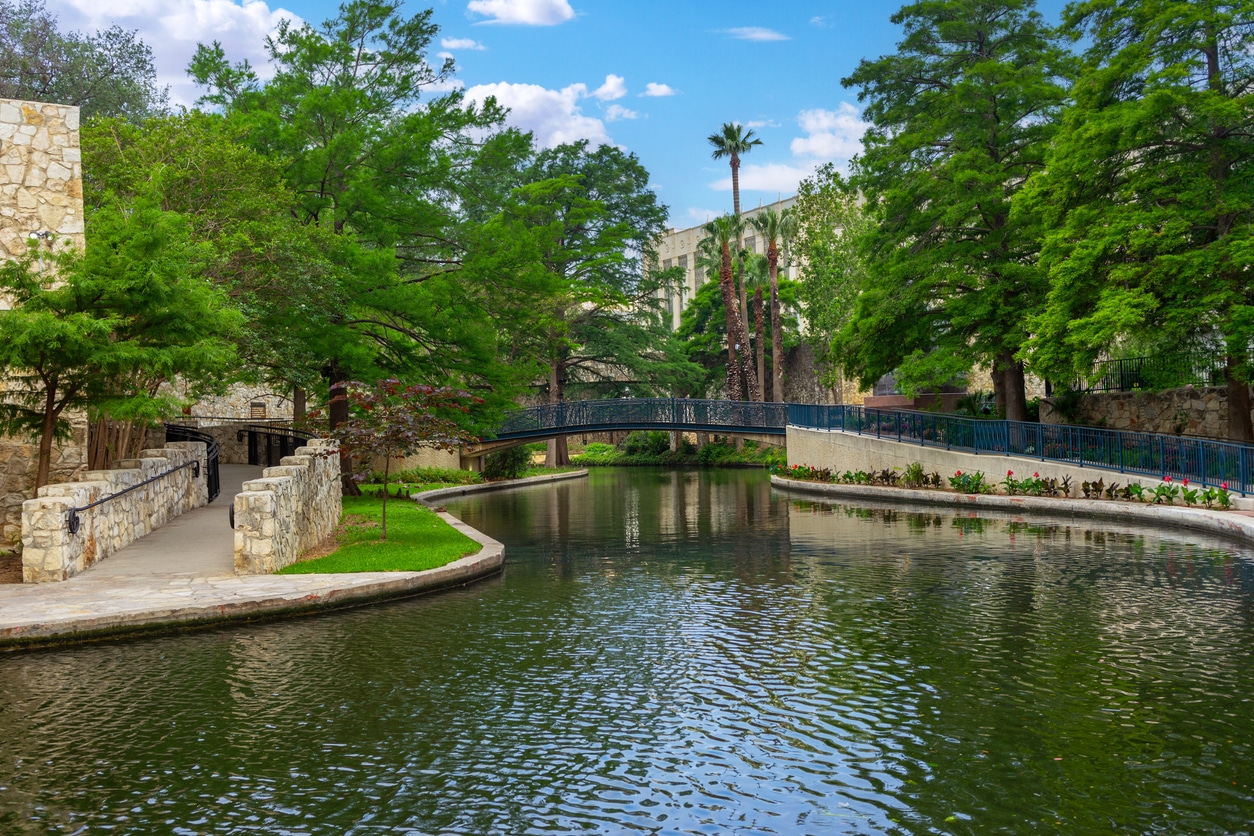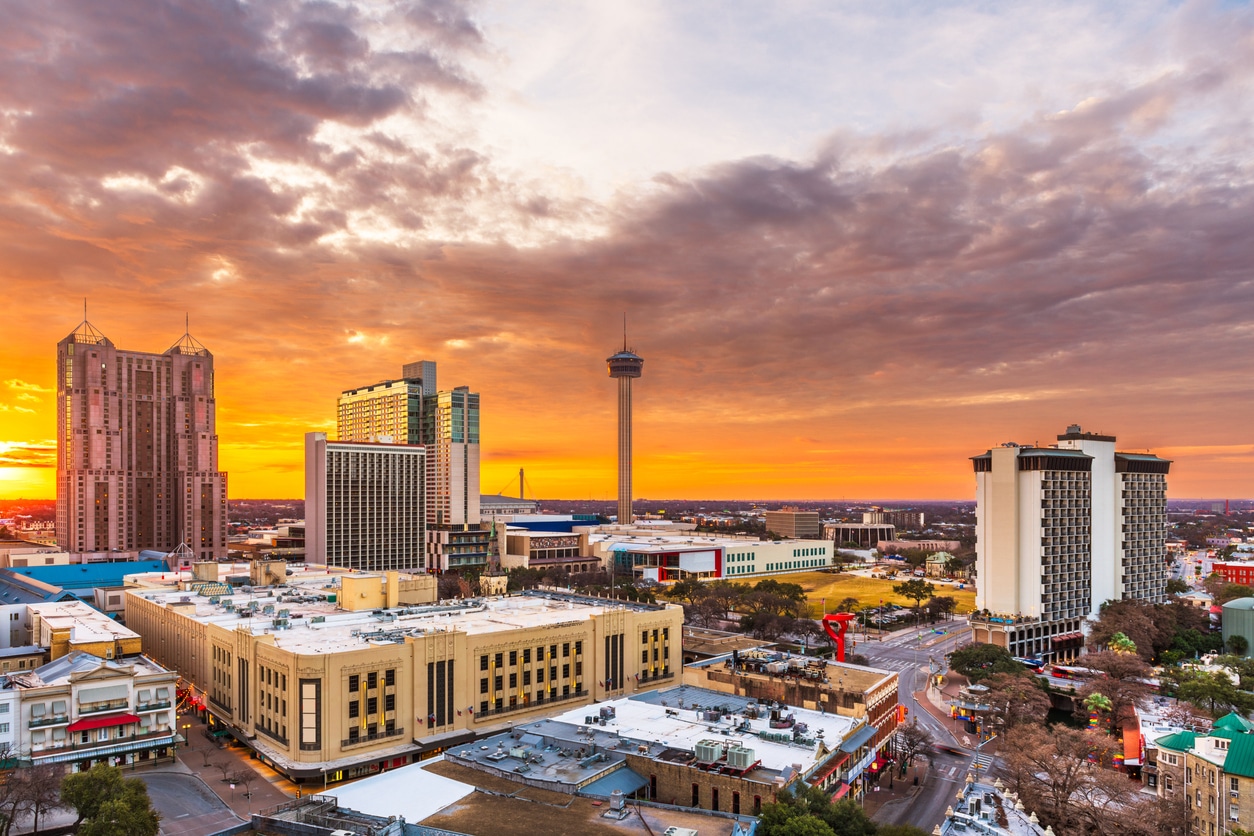For many people, moving to San Antonio, Texas, means finding a rare mix of affordability, opportunity, and quality of life — all with the perks of a major city, but with a history that’s carved into its streets, a culture layered into its food, and a pace that lets you breathe sacrificing vitality.
Is San Antonio a good place to live? Plenty of new residents seem to think so. The travel brochures will tell you about the River Walk, the Alamo, the festivals, and the food, but it all comes together to be more than the sum of its parts. Add a strong job market, lower-than-average housing costs, and a growing reputation for innovation, and it’s easy to see why people are putting down roots here.
In this guide, we’ll break down everything you should know before moving to San Antonio, from the cost of living and housing trends to the best places to live in San Antonio based on your lifestyle. If you’re ready for the full picture — the good, the not-so-good, and everything in between — this will get you there.
9 Things to Know About Living in San Antonio (Before Moving to San Antonio)
San Antonio is big but never overwhelming. Historic but not stuck in the past. Affordable but still full of life. If you’re serious about moving to San Antonio, it helps to know what you’re stepping into — the cost of living, the housing options, the best places to live in San Antonio, and what daily life really feels like once the tourist spots fade into the background.
1. The cost of living in San Antonio is lower than in most big cities
San Antonio offers a more affordable lifestyle compared to many major U.S. cities. For instance, the cost of living in San Antonio is approximately 41.4% lower than in Austin, with housing costs being about 150.3% less expensive. Compared to Dallas, San Antonio's overall cost of living is about 9.7% lower, with housing costs about 18.0% less expensive. When compared to Chicago, San Antonio is about 15.8% more affordable overall, with housing costs approximately 32.2% lower.
To live comfortably in San Antonio in 2025, a single adult would need an annual salary of about $86,694, based on the 50/30/20 budgeting rule (50% needs, 30% wants, 20% savings)). Additionally, the MIT Living Wage Calculator estimates that a single adult in the San Antonio-New Braunfels metro area needs to earn $43,971, which translates to an hourly wage of $21.14.

2. The climate in San Antonio means hot summers and mild winters
San Antonio's climate leans hard into the heat. Summers here are long, humid, and often extreme, with daily highs pushing into the 90s and heatwaves regularly driving temperatures past 100°F. Humidity can make it feel even hotter, especially during July and August, making air conditioning less of a luxury and more of a necessity for survival.
Winters, on the other hand, are short and surprisingly mild. Average daytime temperatures in December and January hover around the 60s, and true cold snaps are rare. Every few years, though, San Antonio can experience an ice storm or freezing rain event that slows the city to a crawl. Spring and fall offer brief, beautiful windows of moderate weather — the kind that pulls everyone outside onto the River Walk, into the parks, or out into Hill Country for a day trip.
3. San Antonio’s housing market offers more room for your money
San Antonio's housing market remains one of the most affordable among major U.S. cities, offering more space for your dollar. As of March 2025, the average home value in San Antonio is approximately $252,434, reflecting a 2.5% decrease over the past year.
The market is currently experiencing a shift favoring buyers. Homes are taking longer to sell, with the average time on the market extending to 87 days, the longest since 2013. Inventory has increased as well, providing more options for prospective buyers.
4. Renting in San Antonio is still affordable compared to other Texas cities
San Antonio continues to offer renters a more affordable lifestyle than many other major Texas cities. As of March 2025, the average monthly rent in San Antonio is approximately $1,289. And when the average rent in the United States stands at $1,755, that price looks like a bargain.
Rental prices vary significantly across neighborhoods. For instance, the most affordable neighborhoods include University Park, with an average rent of $848 per month; Gillette at $858; and Woodlawn Hills at $903. On the higher end, neighborhoods like Midtown San Antonio and Alamo Heights have average rents of $2,101 and $2,015, respectively.
5. The San Antonio job market is growing across several industries
San Antonio’s job market is holding strong, especially in education, healthcare, tech, and government. As of early 2025, the unemployment rate sits at 3.7%, lower than both the Texas and national averages. Companies like JCB are expanding their presence, adding hundreds of new jobs to the area.
Is it a good idea to move to San Antonio? If you want a stable economy, growing industries, and a cost of living that still feels reasonable compared to other major cities, the answer could be yes. Of course, that comes with a variety of potential outcomes. If you do make the decision to move, be sure to use our moving checklist. |

6. The best places to live in San Antonio match every lifestyle
Living in San Antonio means choosing a neighborhood that fits your rhythm, whether that’s family barbecues, late nights out, or quiet mornings on the porch. No matter what you’re looking for, you’ll find a part of the city that feels like home.
Best for families
Alamo Heights is the classic choice for families moving to San Antonio. It has some of the best public schools in the city, a walkable feel, and easy access to parks, museums, and shopping. You’ll find tree-lined streets, historic homes, and a real sense of neighborhood pride — all just a short drive from downtown.
Best for young adults
Tobin Hill offers young professionals a little bit of everything: nightlife, culture, history, and a location that puts you close to Downtown without the downtown price tag. Bars, restaurants, coffee shops, and music venues are packed into walkable blocks, and the Pearl District is right next door for even more options.
Most affordable
If affordability and peace of mind top your list, Oak Park-Northwood is a smart choice. This residential neighborhood feels tucked away from the city’s faster pace but still offers quick access to Downtown and major highways. Housing prices are reasonable, and the area consistently ranks as one of San Antonio’s safer spots to settle down.
7. Outdoor recreation in San Antonio is a way of life
If you like being outside, living in San Antonio will feel like an upgrade. The River Walk isn’t just for tourists — locals use it for morning runs, bike rides, and grabbing coffee along the water. Parks like Brackenridge and McAllister offer miles of trails, playgrounds, and space to stretch out when the weather cooperates.
And when you want a real escape, the Texas Hill Country is right next door. Day trips to places like Government Canyon State Natural Area or Guadalupe River State Park give you quick access to hiking, tubing, and wide-open skies. Outdoor life in San Antonio is a big reason why people who move here end up staying put.

8. Food, culture, and history are woven into daily life
Living in San Antonio means you’re never far from a good meal or a story worth hearing. The city’s roots run deep, and you feel it everywhere: in the preserved Spanish missions, the art galleries tucked into historic buildings, and the mariachis playing on a random Thursday night.
Food is a major part of the culture. You’ll find some of the best Tex-Mex in the country here, but that’s just the start. Barbecue joints, taco trucks, and bakeries mix old traditions with new takes. Events like Fiesta San Antonio, an 11-day citywide celebration every spring, pull it all together, showcasing the city’s history, music, food, and people.
9. You’ll probably need a car, but the city is manageable
San Antonio is a driving city. Public transit exists — mostly buses — but it’s limited compared to bigger metros like Chicago or New York. If you plan to live and work downtown, you might get by without a car. In most other neighborhoods, though, a car makes life a lot easier.
That said, traffic is manageable compared to other large Texas cities. Parking is usually easier too, especially outside the urban core. Walkable pockets like the Pearl District, Southtown, and parts of Alamo Heights give you options if you want to park the car and stay on foot. But for the most part, moving to San Antonio means planning on some windshield time.

Why Are People Moving to San Antonio (or Not)?
There’s a reason San Antonio keeps growing. Living in San Antonio, Texas, means more affordability, more culture, and a slower pace of life that still offers real opportunity. Whether you’re moving from within Texas or from moving out of state, you’ll experience these pros and cons.
Here’s how it breaks down:
Pros of living in San Antonio:
Lower cost of living compared to most major cities
Affordable home prices and rental options
Mild winters and lots of outdoor recreation
Rich food, music, and cultural scenes
Strong job growth across healthcare, education, and tech
Family-friendly neighborhoods with good schools
A slower, less stressful pace than Dallas, Austin, or Houston
Cons of living in San Antonio:
Summers are long, humid, and hot
Public transit is limited outside downtown
Some areas still face higher crime rates
Is Moving to San Antonio the Move for You?
The best moves are about more than a change of address. They are a change of rhythm. A new texture to your mornings and weekends and ordinary Tuesday afternoons. Moving to San Antonio, Texas, gives you that chance — to slow down without losing momentum, to live in a city that still leaves room for living.
When you’re ready to make it real, Colonial Van Lines can help. With more than 50 years of experience in long-distance moves, we know how to get you there without the usual stress and second-guessing. Let us handle the logistics so you can focus on your new start. Get a free quote today and take the first real step toward your move to San Antonio.

